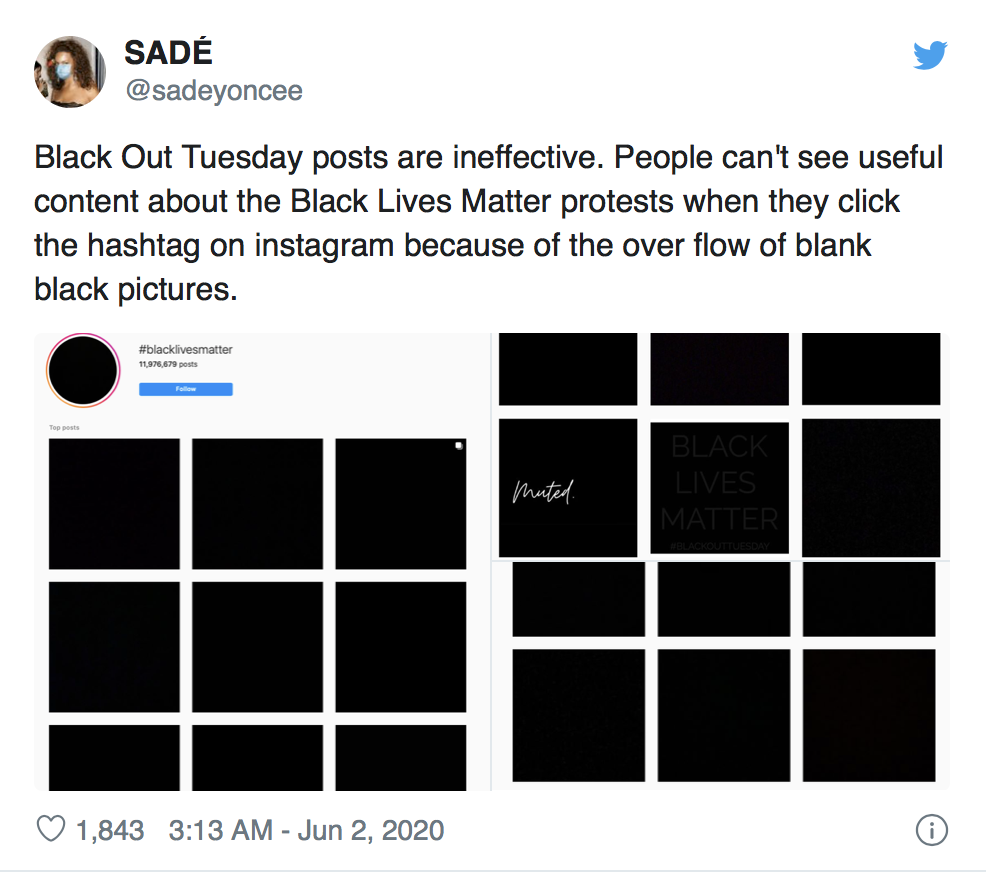
How to avoid performative activism
Move beyond posting a black square to support a cause.
Activism comes in many forms, and social media is now playing a big role in how conversations start. But too often, activism on social media can be more of an act to prove one’s goodness, than true solidarity.
On Tuesday June 2, Instagram was bombarded with black squares for #BlackOutTuesday, a day proposed by leaders in the music industry to recharge and figure out how to hold their partners accountable by executing a plan to support the culture it profits from.
It was co-opted by just about every celebrity on Instagram, even those outside of the music industry, and soon enough everyone was in on the campaign.
One of the main flaws in this project was that people were using the Black Lives Matter hashtag, so all the important updates, resources and information surrounding donations, petitions and protests were being erased by black squares.

The other problem is that the majority of people who participated failed to do anything else for the movement.
“That black square post was hilarious cause everyone who posted it is back to posting regular things now,” said one commenter on Twitter
Another wrote “people who were silent for the past few days and suddenly posted a black square on Tuesday and STILL remained silent and then started posting their own personal stuff again today and CONTINUE to remain silent doesn’t sit right with me at all.”
This is an example of performative activism, a type of “activism” that is solely rooted in increasing one’s social capital, rather than devotion to a cause.
In the wake of George Floyd’s murder and the national civil unrest, no one wanted to seem like a “bad person” online. So many took the opportunity to post a black square to show solidarity, and then proceeded to move on with their lives and left the fight behind.
So then how can White and non-Black people contribute to the Black Lives Matter movement?
RELATED CONTENT
When used properly, social media can be a useful tool for awareness, education and fundraising. Instead of hopping on a trend that doesn’t have any tangible impact, people can repost information from Black accounts to amplify their voices and educate their followers on systemic racism in the U.S.
White and non-Black people can also donate to bail funds to support protesters and other organizations like Color of Change Education Fund, Campaign Zero, NAACP Legal Defense Fund and Black Emotional and Mental Health Collective.
Several creators on Youtube have published videos to watch for people who don’t have the money to donate. They filled the videos with ads, and if the viewer lets them run through, the creator makes money from the ads which they will donate to the Black Lives Matter foundation.
White and non-Black people can also support Black-owned businesses during these times, and pledge to continue doing so in the future.

If possible, going to protests is a great way for people to support the cause, but if that’s not an option, learning about anti-racism and leading these conversations at work and at home can be just as revolutionary.
When White and non-Black people find themselves participating in activism for the Black Lives Matter movement, it’s crucial for them to reflect on whether they are doing it out of empathy and passion, or simply out of wanting to be seen as good by others.











LEAVE A COMMENT: